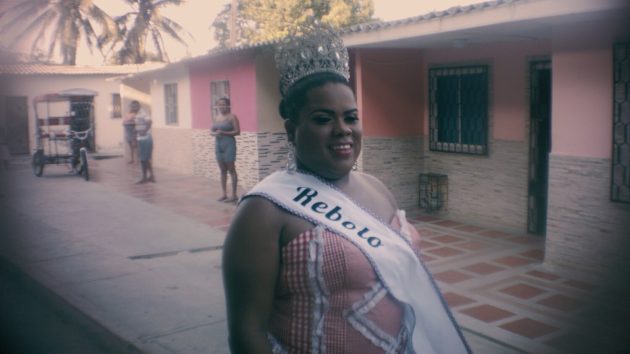This film review was originally published by our partner, Sounds and Colours. You can read the original here.
Colombian first-time filmmaker Carlos Maria Romero shot ‘La nave’ (Colombia/UK, 2021) during a year in which gatherings were forbidden. Through secretly-filmed performances with members of marginalized communities – including Indigenous, queer, and Afro-Colombian people – his film provides a unique insight into the Carnaval de Barranquilla, northern Colombia’s biggest cultural event.
A mix of performance styles including poetry, music, dance and theatre reflect a celebration of the ancestry of these communities and their continued struggle for recognition. They also show how Carnaval is lifeblood to these distinct groups of Barranquilla, and one which allows them to affirm their identities.
The essay style of the film enhances the spiritual, fantastic, and subversive elements of Carnaval which have come to define the festival. After all, carnival marks the few days of the year in which the world is turned upside down and oppressed groups are given a space to reclaim power.
We meet members of the local Kogi Indigenous community, wearing white clothing at home within forested surroundings. They stand on top of giant rocks, as the notes from their flutes, deep tones of their drums and the vibrations of their maracas float around them. A candid interview with a young Kogi reveals the deep-rootedness of music within the self in their community, as he explains how for them, ‘Everything we do comes from our soul’. He goes on to elaborate on the way in which music, nature, and his community are entangled in a symbiotic relationship, saying: ‘We sing to them with our drum. We sing songs to these animals and they like it, just like us.’

La nave also gives us access to Barranquilla’s LGBTQ+ community, who are deeply invested in carnival for the platform it provides them. One member of the travesti community – as they refer to themselves – is seen speaking passionately about the previous queer icons of carnival whilst flicking through their images on an iPad. There is a suggestion of the prestige one can achieve at carnival and the glittering legacy one can leave behind. Sadly, ‘There is no travesti visual archive’ they say, but they continue ‘to create, to dream and to resist.’
The Afro-Colombian community also has a starring role in the film. Colombia is considered to have the fourth largest Black African population in the Western hemisphere after Brazil, Haiti, and the United States. Much like in these countries, the Black population is subject to significant structural racism. It is in the context of extreme social exclusion that the practitioners of Afro-Colombian cultures are keen to emphasise their significant artistic contributions to the city and the carnival of Barranquilla. During their interviews, they also emphasise their cultural anchoring in Palenque, the still-breathing still-living first ‘free town’ in the Americas established by runaway slaves. In their own words, the African music they carry inside is passed on ‘from the stomachs of their mothers’.

Champeta is one such Palenque-rooted Afro music and dance, of which the elders share its engrossing origin story. The camera captures a youngster dancing with frenetic energy to a rhythmic up-tempo champeta song, re-energising the film and injecting a whole lot of fun.
The film culminates with a long sequence inside a hut in which the carnival is re-enacted by the different communities. A group of Indigenous musicians encircle the dancers and tempt them with the notes of their flutes. The choreography quickens as the music intensifies. A woman adorned with silver is seen to enter a trance-like state. She writhes around the room while an Afro-Colombian performer, dressed as the Devil, bewitches with soft movements and seductive glances. The colours blur, the dancers shake to the music: this is Carnaval.
La nave was screened at the recent CASA Festival, CASA New Ideas strand at Brixton House, London. More info about ‘La nave’ here.


